Toni Carroll and Jesse Welsh share a miracle of love and hope at The Alfred
Toni Carroll and Jesse Welsh like beating the odds. She is on life support with both heart failure and cancer, but dedicated Alfred Hospital medical ensured the pair wed in the hospital’s chapel just hours before surgery to save her life. WATCH THE VIDEO
VIC News
Don't miss out on the headlines from VIC News. Followed categories will be added to My News.
Holding the hand of his bride Toni Carroll, Jesse Welsh says his wedding vows one line at a time until he comes to the words that almost get the better of him.
He pauses, takes an extra breath, and finally continues: “So long as we both shall live.”
Reverend Christopher Morris, The Alfred hospital’s palliative care chaplain, puts his hand on Jesse’s shoulder as the focus moves to Toni.
Her voice suffering after weeks on ventilators, she stares at Jesse and repeats the same vows without faltering.
Beeps from a life-support machine hidden behind Toni are one of the few reminders we are gathered in a chapel inside The Alfred, where family and friends sit side-by-side with medical staff.
In a couple of hours, some of the same doctors and nurses will take Toni into theatre for major heart surgery that will decide if she, Jesse, and their daughters Amelia, 3, and Madisyn, five months, will continue to enjoy a life together or not.
But for now, this is the moment the couple had feared would never come.
Toni’s path to this point began innocuously when she noticed a marble-sized lump in her neck during the early stages of her pregnancy with Madisyn.
Concerned, she made repeated trips to the doctor with no serious diagnosis.
By the time she was six months’ pregnant, the lump was larger than a 50c piece, so Toni visited Frankston Hospital where doctors diagnosed a cold and gallstones.
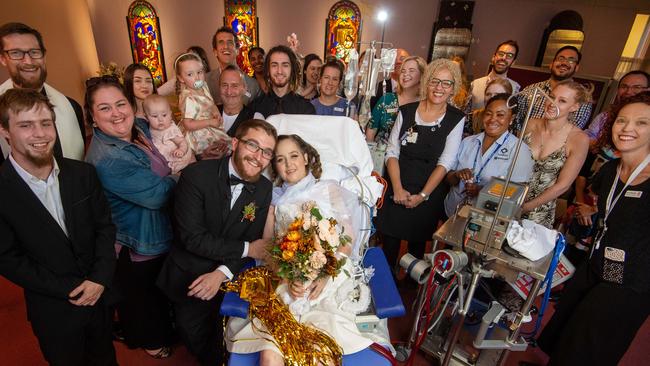
Toni gave birth to Madisyn in perfect health on December 14 last year without complications.
But she was constantly short of breath, tired and losing weight.
Two and a half months later, Jesse, 23, came home to find his partner barely breathing.
“When I came home she just looked dead,” he said.
Back at Frankston Hospital doctors quickly realised the 25-year-old’s heart was not pumping effectively and ordered tests to see why she was slipping away.
The results were scarcely believable — not only did Toni have heart failure, she also had Stage Four Hodgkin’s lymphoma.
The cancer had been “smouldering away” for months, spreading through Toni’s neck, chest and abdomen.
It remains a mystery if her heart failure is linked to her cancer or a rare complication of her pregnancy known as post-partum cardiomyopathy. Either way, Toni was suddenly staring down the barrel of two potentially terminal illnesses.
Initial efforts focused on Toni’s cancer until the first round of chemotherapy triggered further heart issues. She was transferred to The Alfred on April 8 in case its world-leading intensive care unit was needed.
Toni fondly remembers Jesse buying her a roast beef and pickle sandwich after they arrived at The Alfred. It was the last thing she ate or remembered of the next 3½ weeks.
“I did die,” Toni said.
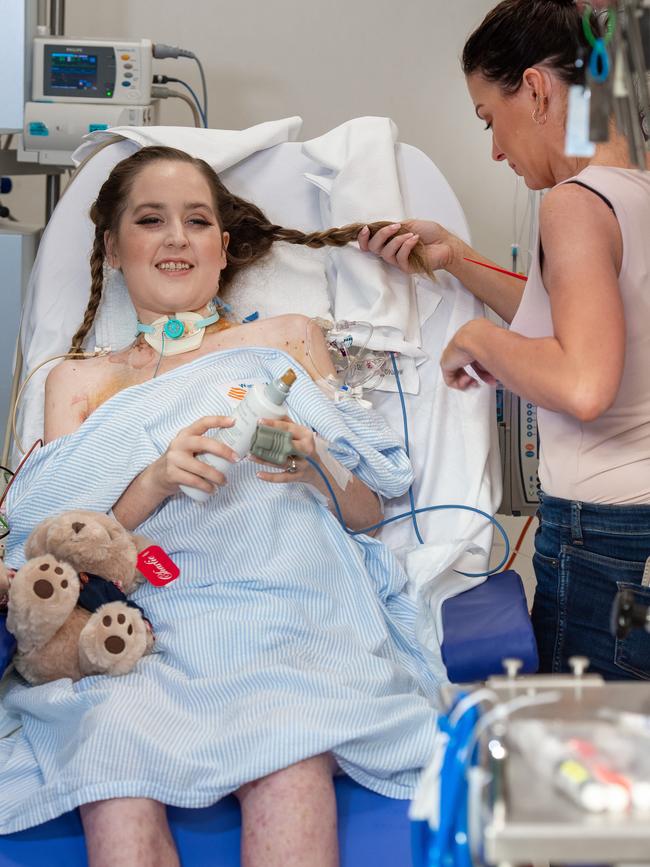
With her heart pumping at just 20 per cent capacity, Toni suffered an infection and sepsis that sent her blood pressure plummeting to the point she could not respond and had to be placed on life support.
“Her heart stopped, swelled up and they said she had more than five days, less than 10, and then I’d have to make a decision (to turn off life support),” Jesse said.
Toni was fast running out of options. The most extreme form of life support, an ExtraCorporeal Membrane Oxygenation machine, or ECMO, acts as a person’s heart and lungs when their own fail.
Toni’s rampant cancer meant she would not normally have been considered suitable for ECMO. But intensive care doctor Dashiell Gantner decided the young mum of two had nothing left to lose.
“We don’t want to put somebody though ECMO and the invasive procedures that go along with it, if it is going to be futile,” Dr Gantner said.
“It was not done without some serious consideration of whether Toni was going to be able to survive.
“In Toni’s case, we judged that, because of her age, because of her general health being pretty good, we were comfortable to push the envelope.”
Nobody with the mix of conditions Toni was facing had been kept alive in a coma on ECMO and given chemotherapy.
“None of us would have dreamt this was possible and I’m not aware this has been done anywhere else in the world before,” Dr Gantner said.
“There was a great deal of consultation between the different specialities in the hospital: the cardiologists, the cancer specialists and the intensive care doctors and nurses. There were also discussion with Toni’s family — at that point she was unable to communicate with us — about the risks of what we were planning to do.
“It was really a choice between certain death and a slim chance of survival.”
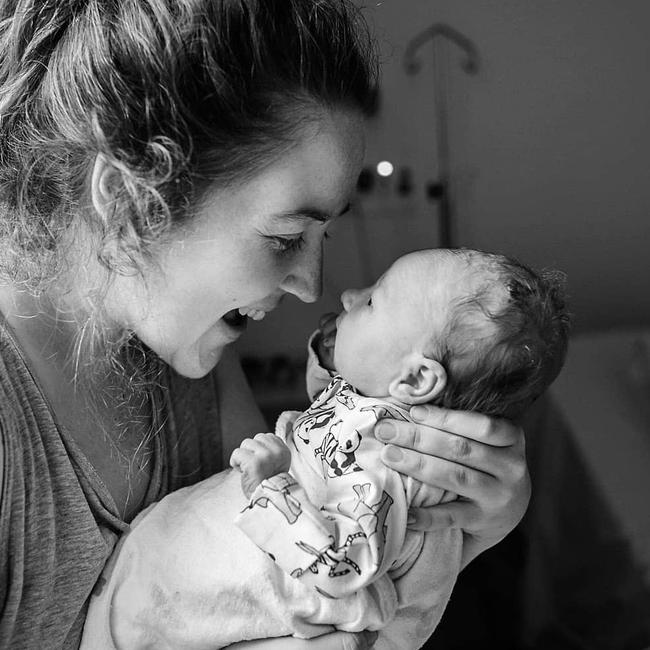
For weeks Jesse split his time between Toni’s bedside and the hospital chapel, amazed at her strength and the specialists’ determination to save her.
“She just kept fighting. They kept saying she was not going to make it, but they just kept pushing her every day, minute by minute,” Jesse said.
“They said she was more of a risk if they didn’t do chemotherapy because the mass would get bigger and push on to her heart.”
But the impact of ECMO on a person’s body means it can only be used for a short period, even without the damage wrecked by chemotherapy.
On April 29, Toni’s time was up; her kidneys were injured and she needed dialysis; a lung infection took hold; her liver was damaged and Jesse had to constantly massage her hands and feet to hold off the need for amputations.
But, with the cancer responding to full-dose chemotherapy and her heart gaining strength, doctors wanted to ease her off ECMO by plumbing a pump directly into her heart but not her lungs.
If Toni survived the transition the new ECMO-style machine could not only sustain her for a while longer, but it would allow her to wake.
Toni recalls: “I woke up and it was like there was nothing. And I thought, ‘Oh my god, what is in my mouth? What is going on?’ I was grateful, just so grateful, that they didn’t give up.
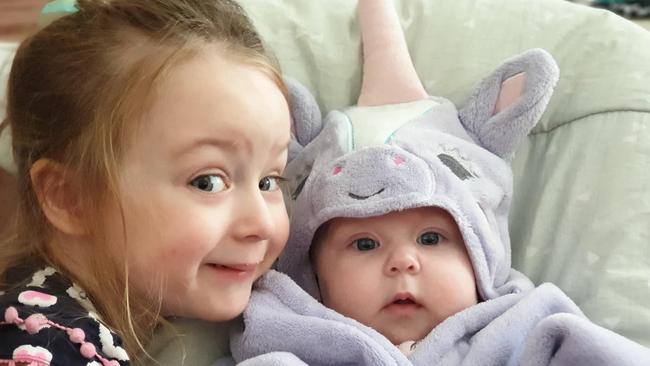
“Some people might see the machine as scary, but I haven’t really cried about it because I feel like I am strong and I can get through it.”
Despite being tethered to a machine in bed, Toni embraced her life as she turned the corner and began to improve.
“In those more recent 3½ weeks she has been able to be woken up, she has been able to talk to us and come off the ventilator and engage with physiotherapy and more usual sort of activities like sitting up, telling us when she is uncomfortable or wants to be left alone,” Dr Gantner said. “Of course, she has also been able to participate in the planning of her wedding …”
Jesse and Toni were high school sweethearts, they had talked about marriage but couldn’t afford it after their daughters came along.
As he kept vigil, Jesse promised that if Toni ever woke up he knew exactly what he wanted to do.
“One day I came in and closed the curtain, closed the door, and asked her to marry me.”
Toni was overwhelmed.
“I cried. I was so happy. But he took too long,” she said.
Despite their joy, both were agonisingly realistic about the fact Toni may be running out of time.
In less than a week she was set for another make-or-break situation.
Unable to survive on life support indefinitely, surgery was planned to remove the pump keeping Toni alive. They hoped her own heart would be able to sustain her, though it was far from certain.
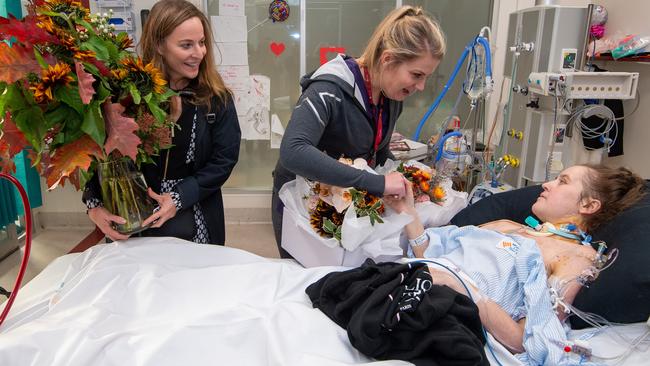
“We got married quickly because I was having the heart pump out and, if they take it out and my heart fails, they wouldn’t be able to save me,” Toni said.
Jesse immediately collected the paperwork and ICU staff stepped in to get the 30-day wedding application period waived, but many felt compelled to do more.
On Monday, May 20, nurse Mary Fox sent an email asking if anyone wanted to help organise a wedding. Within half an hour 150 staff jumped on board.
“They gave us a choice — we could get married on Thursday afternoon then have surgery on Friday, but they said Toni’s best chance was to get married in the morning and have surgery in the afternoon,” Jesse said.
“They told us it was going to be so basic: a small reception, a cutting of a cake afterwards in a room.”
They lied.
On Thursday, May 23 at 7.30am and with full medical precision a procession flows through the hospital corridors ferrying balloons, streamers, a wedding arch, fairy lights, food, white seat covers … and everything else needed to create a reception centre in the ICU training room.
In the room next door makeup artist Sharon Gallo begins working on the excited and somewhat surprised bride, still in her bed on life support.
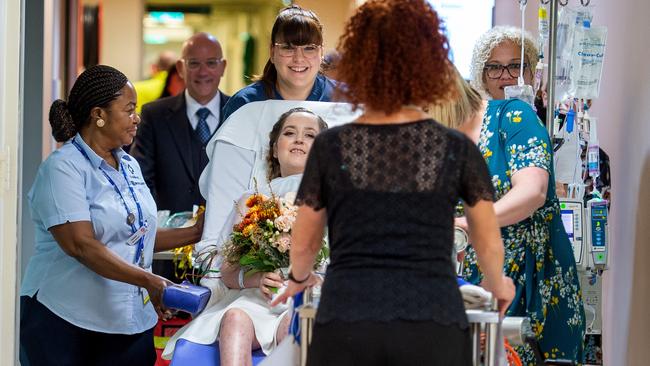
“I don’t usually wear makeup anyway, so this is a very special day,” Toni says between sweeps from a makeup brush.
“I am freaking out now … I haven’t needed to until now because everyone has been so supportive.
“It has been the thing that has made me so perky and happy, looking forward to this.”
Around them nurses and doctors in formal wear continue around-the-clock treatment, taking care not to damage dozens of red love hearts stuck on every available surface, including the heart pump.
White wedding horseshoes hang from an intravenous drip, another from the trolley containing Toni’s pump.
Dr Carys Jones and Dr Sandra Stoll deliver custom-made wedding bouquets in Toni’s favourite burnt orange autumn colours.
Having already rewritten the books with Toni’s medical care, The Alfred team is now doing the same for her wedding.
Rather than simple bedside vows, they are going to wheel her and her life support system through the hospital, downstairs and to the chapel.
“We have never put anyone on ECMO into a wedding dress and taken them to the chapel of the hospital before … this is next level,” Dr Gantner said.
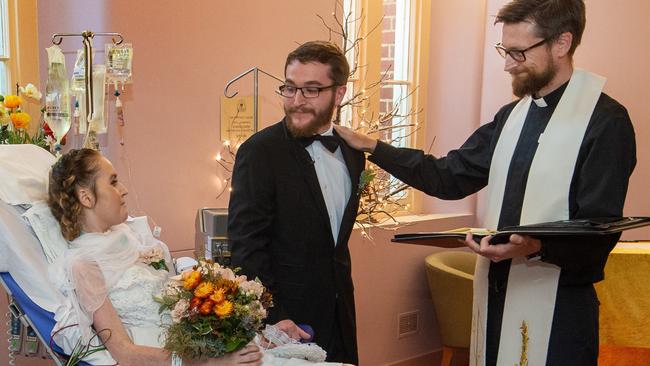
A team of medics begin the tricky transfer of Toni from her ICU bed to a specialised chair.
Ms Fox and two colleagues race off with Toni’s wedding dress to make some emergency adjustments so it can fit around the mechanical heart equipment.
A matching white scarf is tied around Toni’s neck, hiding the tubes in her neck.
One luminous red tube clashes badly with Toni’s dress but is too important to hide.
The medics hope Toni’s family don’t realise it's the blood pumping to and from Toni’s chest.
Nurses Jayne Sheldrake and Merna Cucanic will walk Toni down the aisle because they must stay within arm’s reach of the life-support system.
The wedding procession heads out of ICU at 10.40am, led by the huge heart pump, Toni in her chair, nurses wheeling a drip and other equipment attached behind.
A trolley follows packed with a defibrillator, drugs and emergency equipment, as well as bottles of bubble mixture and another wedding horseshoe resting on top.
With only one power point, the wedding ceremony has to take place at the side of the chapel rather than the altar, to provide backup power for the heart pump.
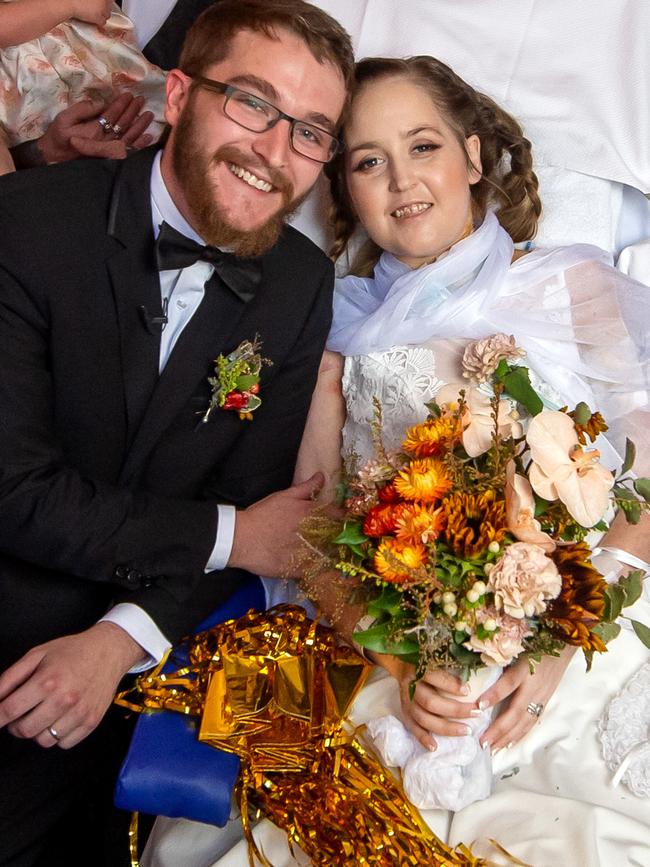
With so many medical staff filling the chapel Rev Morris begins by asking for their pagers to be on silent, but from then on the ceremony continues like any other dream wedding. Almost.
“I did say to Toni that I didn’t want to say ‘Till death do us part’, because I don’t think that is the end,” Jesse said.
As Toni is wheeled into her reception with her beaming husband by her side there is nothing but celebration. The couple even have two wedding cakes to cut — one provided by their family, the other by The Alfred staff.
Brief speeches are made to thank guests for attending as well as working to save Toni’s life.
Patient experience nurse Paul Leonard is used to becoming involved with patients and their families on what can be the worst days of their lives.
Now, dressed in his three-piece-suit, he understands why so many staff moved heaven and earth to create an over-the-top wedding.
“Now, no matter what happens, she’s got that memory of getting married,” he said. “Even if she had not made it through surgery at least she would have had that memory, as did Jesse and their kids.”
Mixing through the crowd are a handful of guests wearing blue surgical scrubs.
Cardiac surgeon Professor David McGiffin shakes Jesse’s hand and offers his congratulations as well as a promise to look after his new wife.
In a couple of hours Prof McGiffin will lead the team trying to disconnect Toni’s life support.
Another of the usual surgery preparation rules are bent for the day as Toni is allowed a small sip of champagne.
Later that day Toni’s operation is completed without complication, a tense 48 hours follows in ICU as she initially struggles under her own power.
But mercifully her heart grows in strength and, by midweek, doctors begin talks about the possibility of her leaving ICU. “She’s the only person whose come out of theatre looking so good. Her makeup was still done, she had her eyelashes on,” Jesse laughs.
There is further good news on Thursday. PET scans show a strong reduction in the cancer throughout Toni’s abdomen.
He knows his patient still has a long way to go, but Dr Gantner can barely contain his emotion when he details Toni’s new prognosis.
MORE: TWO CHARGED OVER ALLEGED BOMB FIND
WHY TOURISTS ARE LINING UP FOR THIS HOSPITAL
“It is extraordinary to see the progress she has made,” he said, full of admiration.
“It is Toni who has done the hard work. Going through what she has is unimaginable, particularly when she was first diagnosed with not one but two potentially lethal problems.
“She had almost no chance of survival at that time.
“Although she has a long road ahead of her and potential for things to not always go her way, I am now cautiously hopeful that not only will Toni survive, she will survive to live a wonderful life with her family.”


